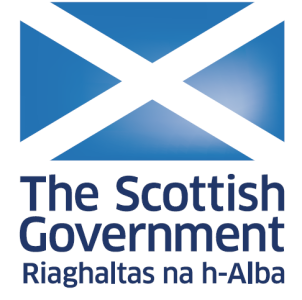Graduate Outcomes 2021/22: Summary Statistics - Activities by previous study characteristics
- Summary
- Graduate activities and characteristics
- Activities by previous study characteristics
- Graduate salaries and work locations
- Graduate reflections on activities
- Notes
We have identified a minor issue with the 2021/22 Graduate Outcomes data and statistics published on 13 June 2024.
Some open data tables, charts and commentary that make use of the following data fields (either as a breakdown or a data restriction) differed from the data we previously provided to HE providers, funders and regulators:
- Standard Occupational Classification (SOC - the skill level of jobs)
- Standard Industrial Classification (SIC - industry of employment)
- Location of employment (including tables restricted to graduates in UK employment)
This issue was due to data publications inadvertently using a version of the Graduate Outcomes data to which a final stage of processing had not been applied. The full list of impacted tables can be found below.
Scale and impact
This affects 17 of 49 tables and charts across both the summary statistics and open data repository. The impact of the issue on each individual table is small, affecting very small proportions of graduates in each case. To quantify this, the percentage of survey respondents with a change to SIC and SOC data is 1.7% and 0.6% respectively, with 0.2% showing a change in location of employment.
Actions for data users
Although the impact on the tables listed below is small, we aim to re-publish with the correct data by Friday 5 July. This message will be updated when this is complete.
Given the minor impact, we recommend that users be mindful when using the affected data while we compile updated versions of the tables. We are very sorry for any inconvenience caused by this issue.
Impacted tables
|
Table/chart |
Affected fields |
|---|---|
|
Chart 12 - Graduates' reflection on activity by salary band |
SOC, Location |
|
Chart 13 - Graduates in UK work by main reason for taking the job and skill group |
SOC, Location |
|
Chart 14 - Graduates working for an employer in the UK by qualification required for the job and skill group |
SOC, Location |
|
Chart 15 - Reflections of graduates working for an employer in the UK by employment contract basis |
SOC, Location |
|
Figure 7 - Employment basis of graduates working for an employer in the UK by level of qualification obtained |
Location |
|
Figure 11 - Standard industrial classification of graduates entering work in the UK by subject area of degree |
SIC, Location |
|
Figure 12 - Standard occupational classification of graduates entering work in the UK by subject area of degree |
SOC, Location |
|
Figure 13 - Percentage of graduates in full-time paid employment in the UK by salary band and personal characteristics |
Location |
|
Figure 14 - Weighted median salary of UK domiciled full-time graduates who obtained first degree qualifications and entered full-time paid employment in the UK by subject area of degree and skill marker |
SOC, Location |
|
Figure 15 - UK domiciled graduates entering work in the UK by region of domicile, region of provider and region of work |
Location |
|
Figure 16 - UK domiciled graduates entering work in the UK by region of domicile, region of provider and region of work |
Location |
|
Table 19 - Standard industrial classification of graduates entering work in the UK by provider |
SIC, Location |
|
Table 22 - Standard occupational classification of graduates entering work in the UK by provider |
SOC, Location |
|
Table 23 - Standard industrial classification of graduates entering work in the UK by standard occupational classification |
SIC, SOC, Location |
|
Table 24 - UK domiciled graduates in full-time paid employment in the UK by personal characteristics and salary band |
SOC, Location |
|
Table 26 - UK domiciled graduates who obtained first degree qualifications and entered full-time paid employment in the UK by provider and salary band |
SOC, Location |
|
Table 30 - UK domiciled graduates in full-time paid employment in the UK by subject area of degree and salary band |
SOC, Location |
If you have any questions about these tables please contact [email protected].
How do the activities of first degree graduates vary by their class of degree?
Tables and charts containing detail on graduates’ subjects have been limited to data from 2019/20 onwards. Data containing 2017/18 and 2018/19 which utilises the JACS coding frame can be found in the Graduate Outcomes archive.
Figure 9 shows:
- The percentage of first degree graduates in full-time employment decreased from 58% in the survey of 2020/21 graduates to 57% among 2021/22 graduates, while the percentage in unemployment increased from 5% to 6%.
- Among 2021/22 first degree graduates, the proportion in full-time employment was highest among those who achieved a first class honours degree (58%). Unemployment was highest for first degree graduates who obtained a third class honours/pass.
- The proportion in part-time employment was highest among those who obtained a third class honours/pass (15%) and lowest (9%) among those who obtained a first class honours.
- The proportion of first degree graduates in further study (including employment and further study) has shown a year-on-year decrease since 2019/20.
Figure 9 - Graduate activity by classification of first degree
Academic years 2017/18 to 2021/22
Reset filters | Download chart data (csv) | Download source data (csv) | About SB268 Figure 9
How do the activities of graduates vary by the subjects they studied?
Figure 10 shows:
- A higher proportion of graduates who studied science subjects were in full-time employment than those who studied non-science subjects. Conversely a higher proportion of graduates who studied non-science subjects were in part-time employment than those who studied science subjects.
- Graduates who studied (22) Education and teaching, (13) Architecture, building and planning or (05) Veterinary sciences were least likely to go into full-time further study, with 2% each.
- Among postgraduates in 2021/22, those who studied (26) Geography, earth and environmental studies (social sciences) were most likely to be in full-time employment (78%). Among undergraduates, those who studied (05) Veterinary sciences were most likely to be in full-time employment (82%).
The science grouping is an aggregation of CAH level 1 codes CAH01 through to CAH13 and CAH26 with the exception of CAH26-01-03 (Human geography). CAH26 (Geographical and environmental studies) has been disaggregated so that CAH26-01-03 (Human geography) is presented in the non-science grouping labelled as 'Geographical and environmental studies (social sciences)'. All other CAH level 3 codes within CAH26 are presented in the science grouping labelled as 'Geographical and environmental studies (natural sciences)'. This grouping of science subjects has been created by HESA.
Figure 10 - Graduate outcomes by subject area of degree and activity
Academic years 2019/20 to 2021/22
Show:
Reset filters | Reset sort | Download table (csv) | Download source data (csv) | About SB268 Figure 10
Figure 11 shows:
- Of those who studied science subjects and were working in the UK, 34% of undergraduates and 38% of postgraduates were employed in the human health and social work industry. A high proportion of these graduates studied (01) Medicine & dentistry and (02) Subjects allied to medicine (e.g. nursing).
- For graduates who studied non-science subjects, education was the most common sector with 24%. For graduates who studied science subjects, it ranked third highest with 9%.
- Over a fifth of graduates from (19) Language and areas studies, (23) Combined and general studies and (03) Biological and sport sciences in UK work were in the education sector.
Combined and general studies is only used for students on courses which do not specify a subject specialism. The majority of students in the combined subject area study at The Open University.
The UK Standard Industrial Classification of Economic Activities (SIC) is used to classify industries by the type of activity they do. Graduates are asked what their employer makes or does. This information is coded using the SIC2007 coding frame. The codes are grouped together for publication. See Standard Industrial Classification: SIC2007 for the full list of codes and how they are grouped together.
Figure 11 - Standard industrial classification of graduates entering work in the UK by subject area of degree
Academic years 2019/20 to 2021/22
Show:
Figure 11 - Standard industrial classification of graduates entering work in the UK by subject area of degree
Academic years 2019/20 to 2020/21
Reset filters | Reset sort | Download table (csv) | Download source data (csv) | About SB268 Figure 11
Figure 11 - Standard industrial classification of graduates entering work in the UK by subject area of degree
Academic years 2019/20 to 2020/21
Reset filters | Reset sort | Download table (csv) | Download source data (csv) | About SB268 Figure 11
Figure 11 - Standard industrial classification of graduates entering work in the UK by subject area of degree
Academic years 2019/20 to 2020/21
Reset filters | Reset sort | Download table (csv) | Download source data (csv) | About SB268 Figure 11
Figure 11 - Standard industrial classification of graduates entering work in the UK by subject area of degree
Academic years 2019/20 to 2020/21
Reset filters | Reset sort | Download table (csv) | Download source data (csv) | About SB268 Figure 11
Figure 12 shows:
- Of 2021/22 graduates who were UK domiciled and in UK work, 82% that had studied science subjects were in high skilled work, compared to 73% of graduates of non-science subjects. For non-UK domiciled graduates in UK work, 85% that had studied science subjects were in high skilled work, compared to 71% for non-science subjects.
- The percentage of non-UK domiciled graduates in high skilled work dropped from 81% in 2020/21 to 77% in 2021/22. This continues a year-on-year decline since 2019/20, when the proportion was 83%.
- For non-science subjects, UK domiciled graduates who studied (22) Education and teaching had the highest proportion of graduates in high skilled work. Among non-UK domiciled graduates, those who studied (26) Geography, earth and environmental studies (social sciences) had the highest proportion of graduates in high skilled work.
- The proportion of graduates in low skilled work was highest for those studying (25) Design, and creative and performing arts and (06) Agriculture, food and related studies, relative to all other subjects. This is true for both UK domiciled and non-UK domiciled graduates.
The UK Standard Occupational Classification (SOC) system is used to classify workers by their occupations. Jobs are classified by their skill level and content. Graduates are asked what their job title is. This information is coded using the SOC2020 coding frame. The codes are grouped together for publication. See Standard Occupational Classification: SOC2020 for the full list of codes and how they are grouped together. Major groups 1 to 3 are grouped together as 'High skilled'. Major groups 4 to 6 are grouped together as 'Medium skilled' and 7 to 9 are grouped as 'Low skilled'.
Figure 12 - Standard occupational classification of graduates entering work in the UK by subject area of degree
Academic years 2019/20 to 2021/22
Show:
Figure 12 - Standard occupational classification of graduates entering work in the UK by subject area of degree
Academic years 2019/20 to 2021/22
Reset filters | Reset sort | Download table (csv) | Download source data (csv) | About SB268 Figure 12
Figure 12 - Standard occupational classification of graduates entering work in the UK by subject area of degree
Academic years 2019/20 to 2021/22
Reset filters | Reset sort | Download table (csv) | Download source data (csv) | About SB268 Figure 12
Figure 12 - Standard occupational classification of graduates entering work in the UK by subject area of degree
Academic years 2019/20 to 2021/22
Reset filters | Reset sort | Download table (csv) | Download source data (csv) | About SB268 Figure 12
Figure 12 - Standard occupational classification of graduates entering work in the UK by subject area of degree
Academic years 2019/20 to 2021/22
Reset filters | Reset sort | Download table (csv) | Download source data (csv) | About SB268 Figure 12

Release date
13 June 2024, 9:30
Coverage
UK
Release frequency
Annual
Themes
Children, education and skills
Issued by
Jisc, Clockwise, Festival House, Jessop Avenue, Cheltenham, GL50 3SH
Press enquiries
+44 (0) 1242 388 513 (option 6), [email protected]
Public enquiries
+44 (0) 1242 388 513 (option 2), [email protected]
Statistician
Luke Perrott
Pre-release access
View pre-release access list for this release
Graduate Outcomes open data repository
View detailed information by provider
User guide
View the Graduate Outcomes user guide





